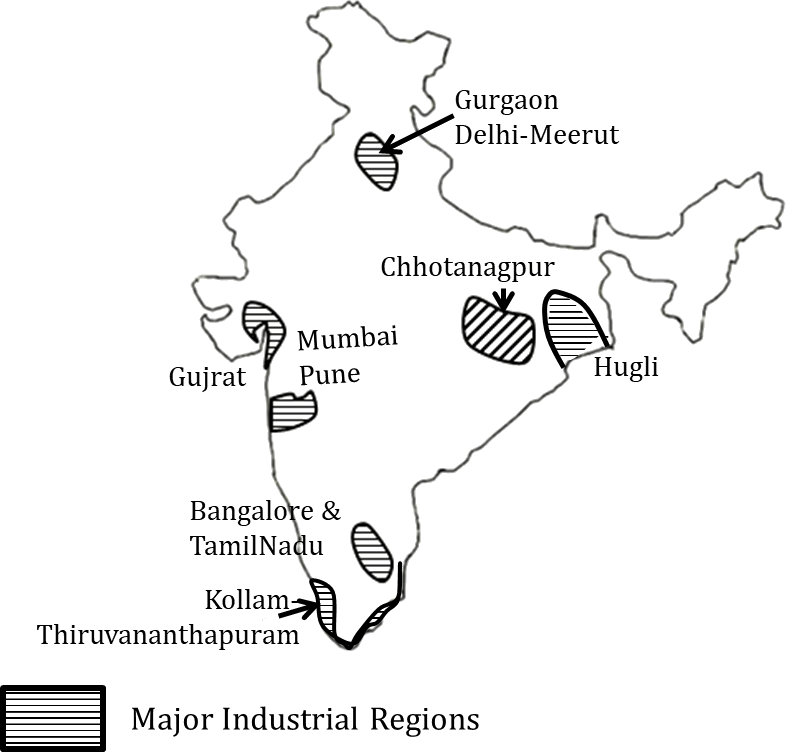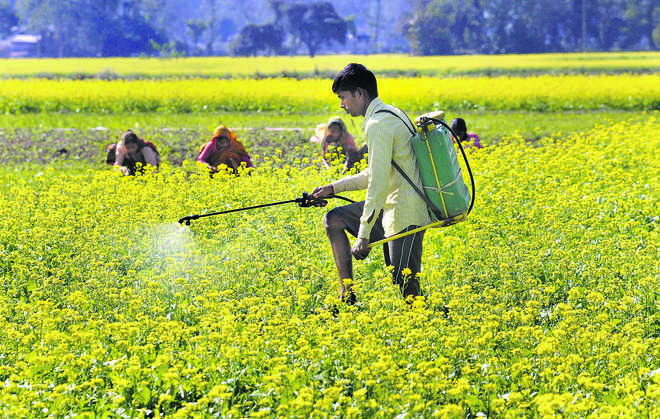Contract farming is a form of commercialization of agriculture. Here a contract is signed between a company and farmer or between a group of farmers to produce a given commodity in a particular amount by maintaining a particular quality. This commodity is sold by the farmer (or) the group of farmers to the given Company at a price which is determined while the contract is signed (pre-determined price).

This assures a pre-determined return to the farmers and a constant supply of the Commodity to the company in a given quantity and quality. Companies are generally involved in retail sales and Agro-Processing or Food Processing industries.
Another advantage of contract farming is that companies extend advanced payment to farmers which helps in the use of modern inputs in appropriate amounts.
Disadvantages of Contract farming
In contract farming, the returns of farmers are fixed. It the market prices are more than the prices offered by the company, then farmers suffer losses. Companies can involve unfair trade practices like hoarding, black marketing, and market manipulation. Here, regulation is required.
Industrial Regions of India
Industrial regions are formed by agglomeration (or) concentration of industrial firms & manufacturing units to share the supply of raw materials, power, transport & communications systems, capital, labor, and market. Sharing of these factors of production reduces their cost of production which enhances their profit and saving which leads to further reinvestment and diversification of industries and manufacturing firms. The following eight industrial regions are identified in India.

Mumbai-Pune Region: It is the oldest, largest, and fastest-growing industrial region in India. It started with the cotton textile industry but is now highly diversified.
Gujarat Industrial Region: Ahmadabad and Vadodara are the main centers of industries. Industrialization started with cotton textile but later on diversified into fertilizers, chemicals, and petrochemical industries. Industrialization was facilitated by these two factors. The shift of cotton textile factories from Mumbai to Gujarat due to congestion in Mumbai and the steep rise in real estate prices. Development of Kandla Port (Sea Port) after independence as an alternative to Karachi seaport which went to Pakistan.
National Capital Region (NCR – NCT+ Surrounding territories) It is the largest and fastest-growing industrial region in the NORTH. It is centered around ‘Delhi & its satellite towns – Ghaziabad, Noida, Palwal, Meerut, Faridabad, Greater Noida & Gurgaon. Industrialization started with cotton textiles. In fast growth has been mainly contributed by its strong infrastructure and success of the Green Revolution.
Kolkata – Howrah Region (Or) Hoogly Region: It is an old industrial region. Industrialization was started with cotton textiles. Its industrialization was largely supported by Kolkata being the capital of British India till 1911. Now it is a declining industrial region due to over-congestion and declining industrial infrastructure.
Chota-Nagpur Region: Bokaro, Jamshedpur & Ranchi are the important industrial towns. The presence of minerals & coal was the major factor for their industrialization. It is dominated by the mineral basis industry and machinery/capital goods. It is a declining industrial region due to poor infrastructure and Law & Order problems.
Tamil Nadu – Bangalore Region: It is the largest industrial region of the south. Chennai, Bangalore & Coimbatore are the most important centers. Its recent growth is mainly contributed by IT, Computers & Bio-Technology.
Visakhapatnam-Guntur Region: It is a small industrial region on the coast of Andhra. Petro-chemical, Iron & steel, and Tobacco are important industries. Its industrialization is largely contributed by the Visakhapatnam Sea Port which is the deepest seaport of India which is also landlocked (cyclones do not affect).
Trivandrum – Kollam Region: It is a small industrial region on the Malabar Coast dominated by Agro-processing industries. Space technology establishment, rubber industry, coir industry are most important.

